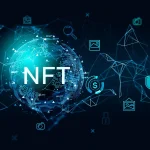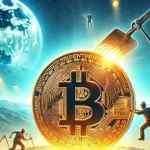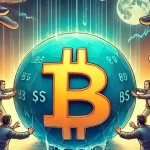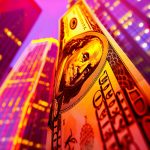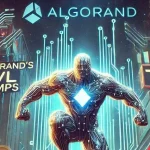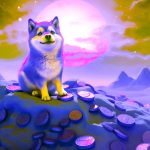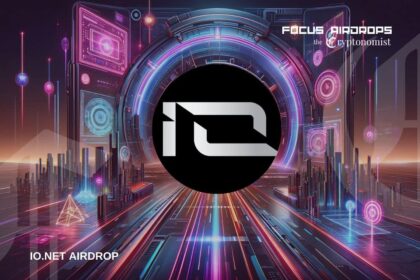NFT art has transformed the way creators engage with their audiences, redefining ownership and value in the digital era. By leveraging blockchain technology, artists now have a new frontier to showcase their work, connect with collectors, and—most importantly—monetize their creations in ways that were previously unimaginable.
The explosive rise of non-fungible tokens (NFTs) is not just a passing trend; it marks a paradigm shift in how art is created, shared, and valued. This guide delves deep into the rise of NFT art, the opportunities it presents for artists, the challenges they face, and actionable insights to succeed in this rapidly growing digital economy.
What is NFT Art?
NFT art is digital artwork that is tokenized and stored on a blockchain, making it unique, verifiable, and transferable. Unlike traditional art forms, NFT art exists exclusively in the digital realm, where its authenticity and ownership are protected by blockchain technology.
NFTs are often used to represent:
- Digital illustrations and paintings
- Animations and GIFs
- Virtual sculptures
- 3D designs
- Photography
Artists can mint their work as NFTs, which allows them to sell their creations directly to buyers without intermediaries. Once sold, the blockchain serves as a transparent ledger to track ownership and resale transactions.
The Appeal of NFTs for Creators
The rise of NFT art has unlocked countless opportunities for creators. Here are the main benefits:
- Direct-to-Audience Sales: Artists can connect directly with collectors, bypassing traditional galleries and agents.
- Royalties on Resales: Many NFT platforms allow artists to earn royalties each time their work is resold in the secondary market.
- Global Exposure: NFTs are traded on international platforms, giving artists access to a worldwide audience.
- Immutable Provenance: Blockchain technology ensures authenticity and prevents counterfeiting.
- Diversified Revenue Streams: NFTs offer artists the ability to monetize digital content in addition to physical works.
The Evolution of NFT Art
NFT art’s rise didn’t happen overnight. It was the culmination of technological advancements, a growing digital economy, and shifting attitudes toward art ownership.
From Traditional Art to Digital Tokens
In the past, physical artwork dominated the market, with authenticity verified through certificates and expert opinions. Digital art struggled to gain traction because it was easy to duplicate, making it difficult to assign value.
Blockchain technology changed everything. NFTs introduced a way to assign unique ownership to digital files, creating scarcity and enabling creators to monetize their work effectively.
Milestones in the NFT Art Movement
- 2017: CryptoPunks by Larva Labs launched as one of the first NFT collections, featuring 10,000 unique pixelated characters.
- 2020: NFT trading volume surged as more platforms like OpenSea and Rarible gained traction.
- March 2021: Beeple’s “Everydays: The First 5000 Days” sold for $69 million at Christie’s, putting NFT art on the global stage.
- 2022-2023: New trends like generative art, AI-driven art, and music NFTs emerged, further diversifying the NFT art market.
Why NFT Art is Transforming the Creative Economy
NFTs have fundamentally changed the relationship between creators and consumers by establishing new revenue models and encouraging experimentation. Here’s how NFT art is reshaping the creative economy:
Democratizing Art
NFTs empower creators from all backgrounds to participate in the art market without the need for traditional gatekeepers. With platforms like Foundation and SuperRare, artists can showcase their work to global audiences, regardless of their location or connections.
Enabling Passive Income
For the first time, artists can earn royalties on secondary sales. This means they benefit not just from the initial sale but also from the long-term value of their work.
Encouraging Innovation
NFT art has sparked creative experimentation, from generative art powered by algorithms to interactive experiences in virtual reality.
Lowering Barriers to Entry
Aspiring artists no longer need expensive equipment or gallery representation to start their careers. NFT marketplaces enable them to mint and sell their work with minimal costs.
How Artists Are Monetizing Their Work Through NFTs
There are several strategies artists use to make money with NFTs:
1. Minting and Selling NFTs
The most straightforward approach is minting artwork as NFTs and selling them on marketplaces like OpenSea, Rarible, or Foundation.
2. Limited Editions and Collections
By creating a limited number of tokens or themed collections, artists can generate scarcity, driving up demand and prices.
3. Offering Utility
Some creators attach perks to their NFTs, such as exclusive access to events, private lessons, or additional content.
4. Collaborations
Collaborating with other artists, musicians, or brands can help creators reach new audiences and expand their influence.
5. Creating Community-Driven Projects
Projects like the Bored Ape Yacht Club thrive because they foster a sense of belonging. Artists can create NFTs that provide community access, rewards, or shared experiences.
Top NFT Marketplaces for Artists
1. OpenSea
As the largest NFT marketplace, OpenSea offers vast exposure to creators. It supports Ethereum and Polygon networks, making it accessible to both high-end collectors and casual buyers.
2. Foundation
Foundation is an invite-only platform known for hosting high-quality, curated art. Artists can use it to showcase their best work and gain visibility among collectors.
3. SuperRare
SuperRare emphasizes digital art and allows creators to list single-edition NFTs, perfect for unique pieces.
4. KnownOrigin
This platform focuses on supporting original and high-quality artwork, providing a space for both emerging and established artists.
5. Hic et Nunc
For environmentally-conscious artists, Hic et Nunc is a Tezos-based marketplace known for its lower carbon footprint.
Challenges Facing NFT Artists
Despite the opportunities, NFT artists face several challenges:
- High Gas Fees: Ethereum-based platforms often charge significant transaction fees, cutting into profits.
- Market Volatility: NFT prices are highly unpredictable, and trends can change quickly.
- Oversaturation: With thousands of new NFTs minted daily, standing out in a crowded market is tough.
- Environmental Concerns: The energy consumption of some blockchain networks has sparked criticism of NFTs’ environmental impact.
- Scams and Plagiarism: Some creators have reported their work being stolen and minted as NFTs by others.
The Future of NFT Art
The rise of NFT art is only the beginning of a broader cultural and technological revolution. As blockchain technology evolves, we can expect:
- Greater Interoperability: NFTs will likely expand across platforms and blockchains, increasing their utility.
- Mainstream Adoption: As major brands and institutions embrace NFTs, their acceptance in traditional art circles will grow.
- New Artistic Mediums: Innovations like AI-generated art and augmented reality (AR) will continue to shape the creative landscape.
FAQs
What is the biggest benefit of NFT art for creators?
NFT art empowers creators to directly sell their work, earn royalties, and engage global audiences without intermediaries.
How do artists earn royalties from NFTs?
Most NFT platforms allow creators to set royalty percentages (e.g., 5–10%) for every resale of their NFT.
Are NFTs environmentally friendly?
Some blockchains, like Ethereum, consume significant energy. However, alternatives like Tezos offer eco-friendly solutions.
Do you need technical skills to create NFT art?
No, many platforms make it easy for artists to mint NFTs without advanced technical knowledge.
How much does it cost to mint an NFT?
Minting costs vary but can range from a few dollars on eco-friendly blockchains to over $100 on Ethereum during peak times.
Can traditional artists benefit from NFTs?
Yes, traditional artists can digitize their work and sell it as NFTs, reaching a wider audience while preserving the original piece.
Conclusion
The rise of NFT art represents a monumental shift in how art is created, shared, and valued. By embracing blockchain technology, artists are unlocking unprecedented opportunities to monetize their work, engage with collectors, and shape the future of the creative economy.


